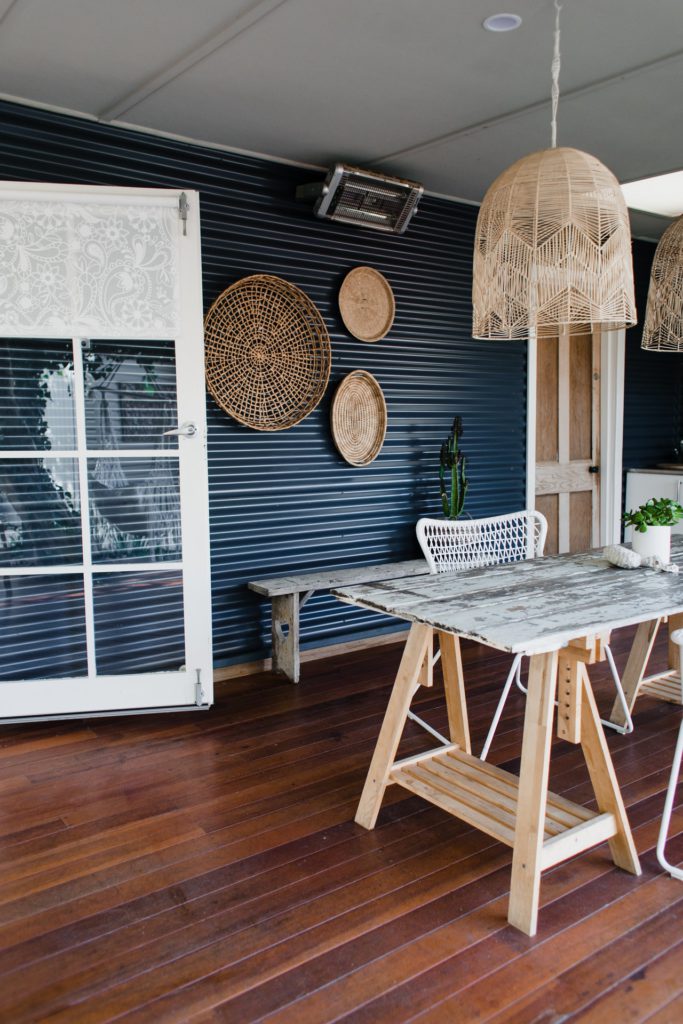When a solid stain is used on a deck, it covers the wood grain. A quality stain seals the grain and prevents moisture from entering your deck and rotting it. Wood stains that are transparent or semi-solid (or opaque) fill the pores in the wood and form a thin film over the deck, allowing natural grains and superficial cracks to shine through in the deck, which is ideal if you like the natural look.
Transparent stain sealants protect your deck from sun damage, while solid stains do not repeat. Use latex full-coverage stains with UV-blocking pigments to protect your wooden deck from the inevitable sun-induced fading.
When it is time to replace rotten wood decks or for other reasons, applying a transparent stain to new wood looks different from applying it to old wood. If the deck is already painted, it can be difficult to return to a transparent wood stain, which can be expensive.

Wood stains come in a variety of different shades and colors to help you customize the colors of how to stain a deck in your home and allow you to maintain the natural look of your wood deck while protecting it from the elements. There are many choices when it comes to stains, some stains are semi-transparent, others cover your deck completely, and some are painted. If you decide that color is not for you, you can look into semi-transparent stains and clear seals for your deck.
While the paint has a few advantages over other finishing options such as stain and sealing, it might not suit you if you wish to have a more natural wooden deck. Colour lasts longer, hides conspicuous flaws in your deck, and gives you more color options than stains.
Remember that professional painters are required to repaint your ceiling floors every 1-3 years and railings and vertical surfaces every 8 years to ensure that the wood is protected from elements and general wear. Unlike painting a deck, staining a deck requires preparing the surface by wiping it free, scrubbing it with a repair that you bought or made yourself, replacing damaged boards, and sanding the surface ribs. These methods can teach you how to stain a deck fast, help protect your wooden deck against elements, and stains that do not require a primer, making it a project that can be completed in half the time that it takes to paint your deck.
Finally, as professionals, we do not recommend the use of paint on horizontal wooden surfaces such as decks exposed to weather and elements, but we do recommend the use of stains in certain circumstances. Both paint and stains have the advantage of increasing the longevity and quality of your deck space, so one option may be the best for your situation.
When you hire a professional they take the guesswork out of determining which spot or color is best for your deck, resulting in a better-looking, more durable finish. A high-quality professional paint lasts longer than a high-quality professional finish. Whichever option you choose, wood flooring should be prepared with paint before the stain is applied so that it lasts a little longer.
Hiring a professional painter or opaque painter who knows what they’re doing can make all the difference. If you want to improve the structural integrity and appearance of your deck, our coloring and painting professionals can help with Major Paintings.
Pine is the most commonly used wood for decks but if a homeowner wants his deck to have an oak, mahogany, cedar, cherry, or teak appearance, any wood can be stained in any color to achieve this. Anyone can buy the best wood deck stains and varnish products at their local hardware store.
Transparent and semitransparent are ideal for new decks to enhance the beauty of their wood, but older decks can also be dyed with solid opacity to cover wear.


